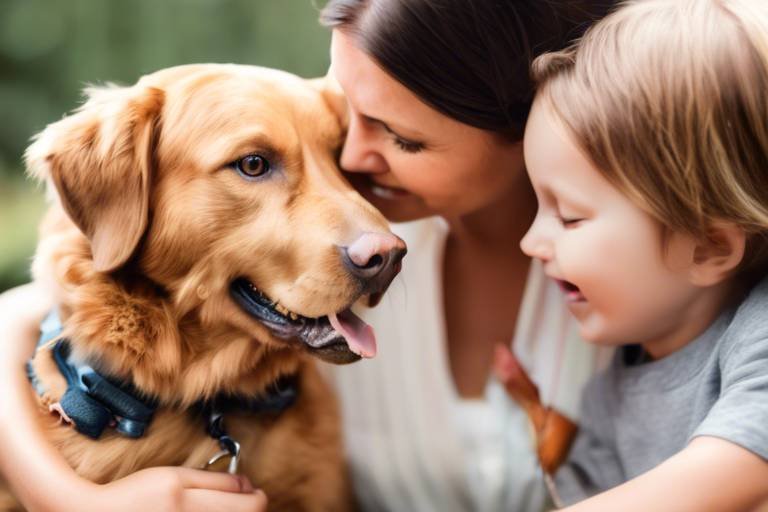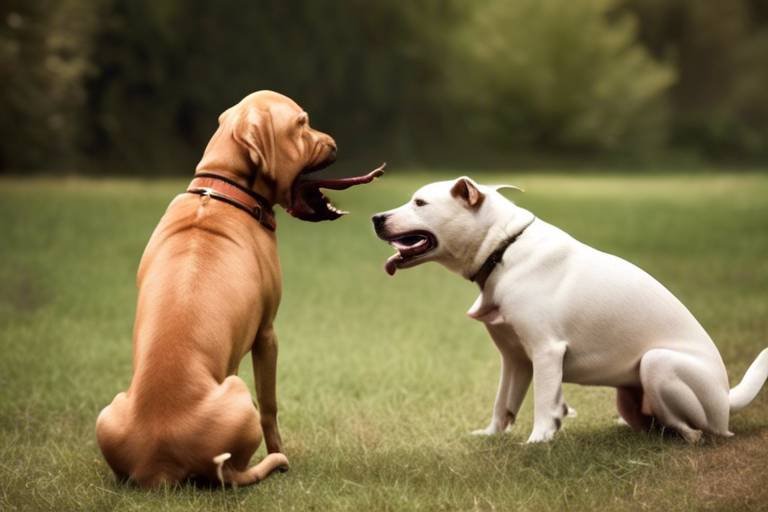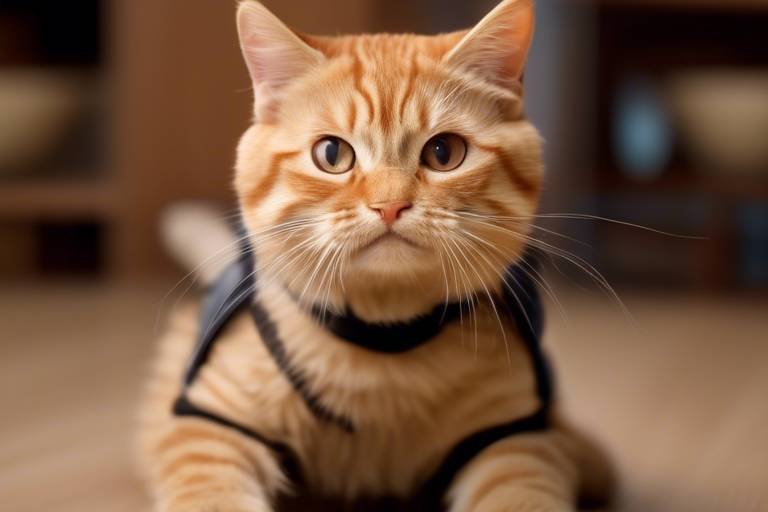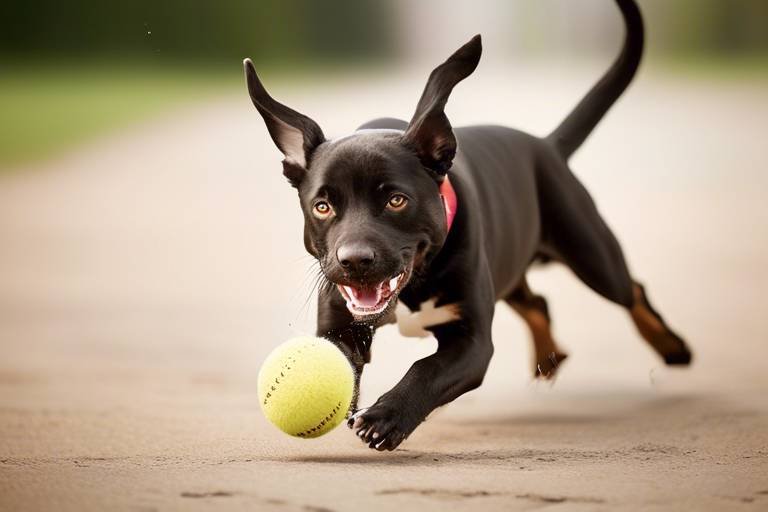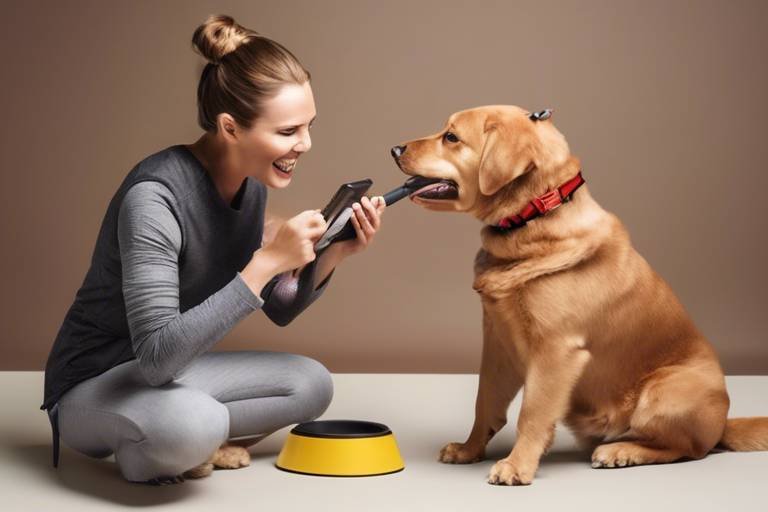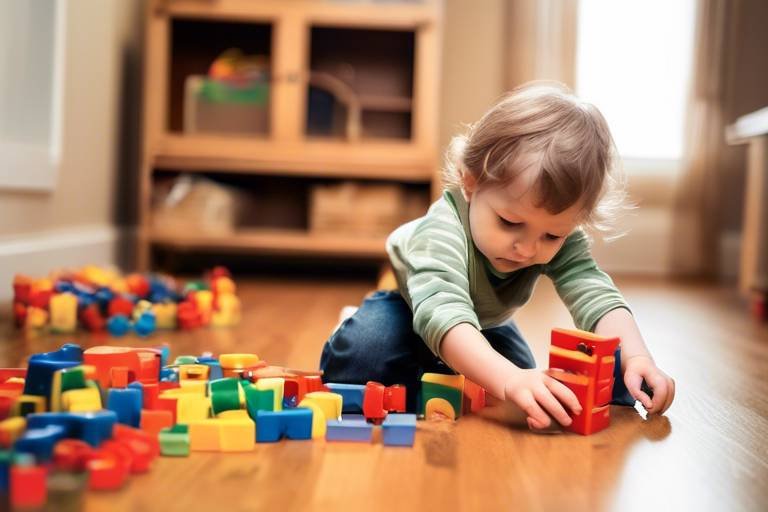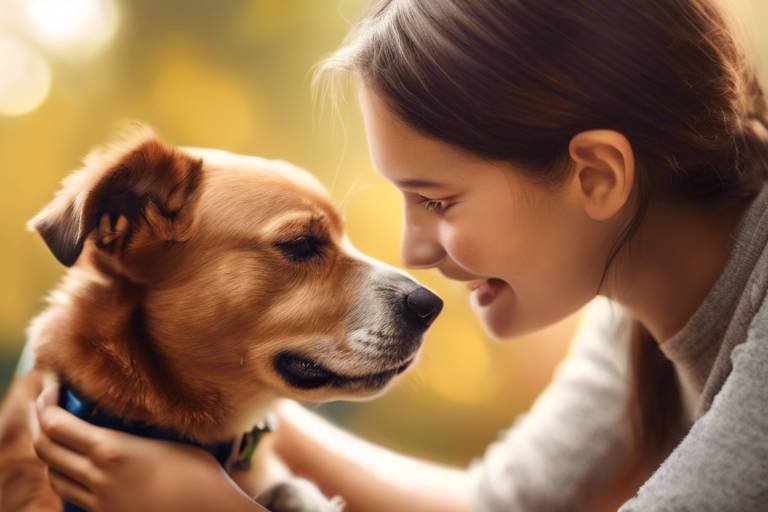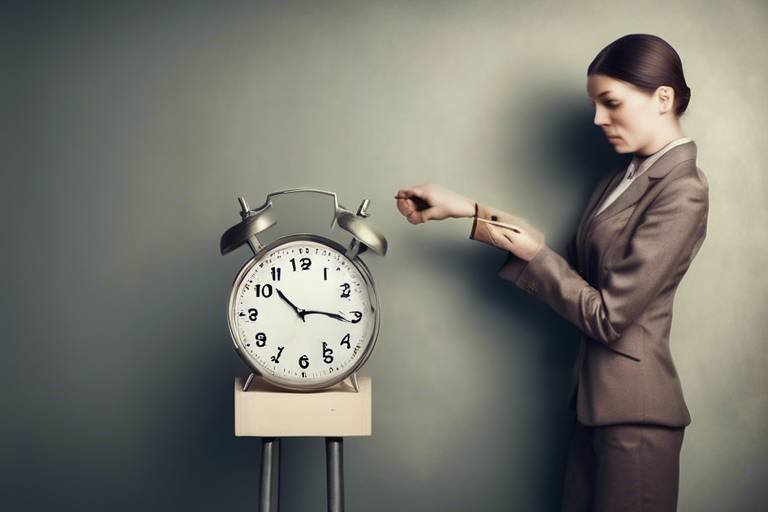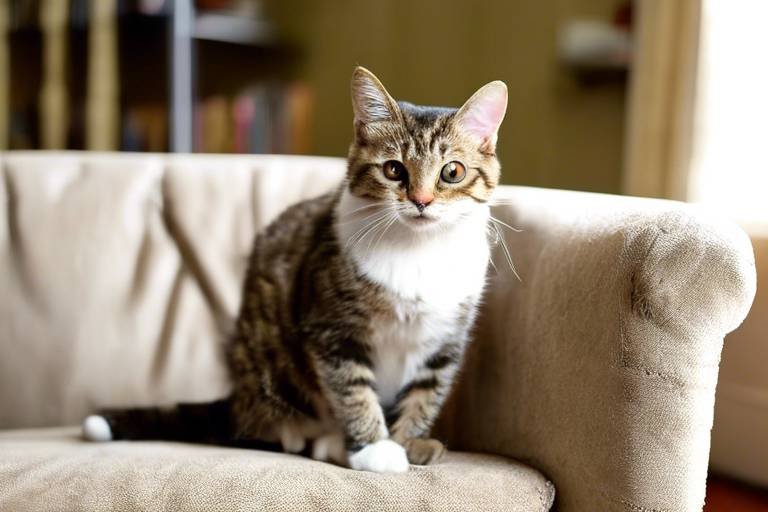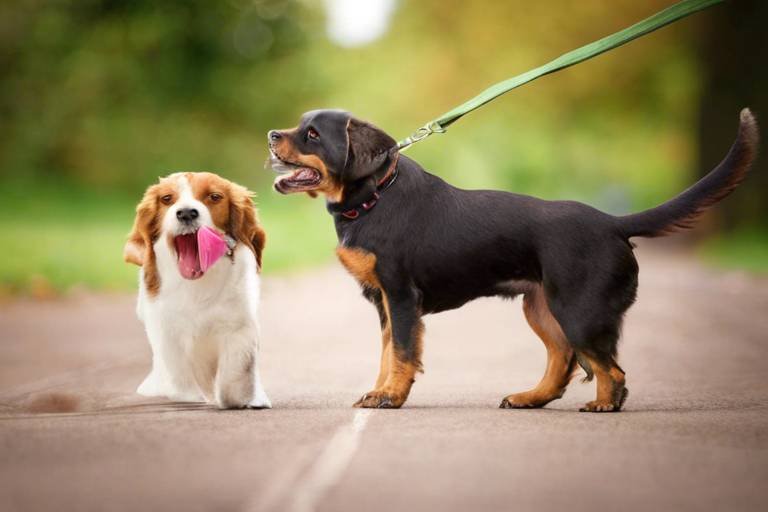How to Use Lures Effectively in Training
Using lures in training can be a game-changer, whether you're working with animals or humans. Imagine trying to teach a dog to sit; instead of just saying "sit," you can hold a treat above its nose, guiding its behavior with something it really wants. This is the essence of luring—using a motivating stimulus to lead someone towards a desired behavior. In this article, we'll dive deep into the art and science of luring, offering practical tips and insights to enhance your training sessions.
Luring is more than just a trick; it’s a fundamental training technique rooted in behavioral psychology. The idea is simple: by presenting a reward that the learner finds appealing, you can guide them towards the behavior you want to reinforce. This method works because it taps into the natural instincts of the learner, whether they are furry friends or human students. By understanding the psychology behind luring, trainers can create a more engaging and effective learning environment. It’s like having a secret weapon in your training arsenal—one that, when used correctly, can lead to remarkable results.
When it comes to lures, variety is the spice of life. Different contexts call for different types of lures, and knowing which one to use can make all the difference. Here are some common types of lures:
- Food Lures: These are perhaps the most popular, as food is a universal motivator.
- Toy and Play Lures: Perfect for animals like dogs, where playtime can be just as rewarding.
- Visual Cues: Sometimes, a simple gesture or signal can serve as an effective lure.
Each type of lure has its unique benefits, and understanding these can help trainers choose the best approach for their specific training needs.
Food lures are among the most common and effective training tools. Think of them as the golden ticket to getting your learner's attention. But not just any food will do! Choosing the right treats is crucial for success. Imagine trying to entice a child with a piece of broccoli—unlikely, right? Instead, you’d want something irresistible, like a chocolate chip cookie. Similarly, when training animals, high-value treats can significantly enhance engagement.
Not all treats are created equal. The key is to select high-value options that will motivate the learner. For dogs, this could be small pieces of chicken or cheese, while for humans, it might be something they enjoy, like a favorite snack. The idea is to find something that makes the learner's eyes light up. When they’re excited about the reward, they’re more likely to engage in the training process.
Effective timing and delivery of food lures can significantly impact training success. It’s not just about having the treat; it’s about knowing when to present it. Imagine you’re teaching a dog to roll over. If you show the treat too early, the dog might get distracted or lose interest. But if you time it perfectly—just as the dog completes the roll—you reinforce the desired behavior. This is where the art of luring truly shines!
Toys and play can serve as powerful lures, especially in training sessions for dogs and other animals. Incorporating play into training not only makes the experience enjoyable but also strengthens the bond between the trainer and the learner. For instance, using a ball to teach a dog to fetch turns the training session into a fun game rather than a chore. This not only motivates the learner but also enhances their willingness to participate in future sessions.
Even experienced trainers can stumble when using lures. Awareness of common pitfalls can save you time and frustration. One major mistake is the over-reliance on lures. While they are effective, becoming too dependent on them can hinder the learner's ability to act independently. Imagine a child who only cleans their room when promised a cookie; they won’t learn to do it for the sake of tidiness. Gradually fading lures is essential to encourage self-sufficiency.
While lures are useful, over-reliance can hinder learning. It’s crucial to wean the learner off the lure gradually. Start by using the lure frequently, then slowly reduce its presence as the learner becomes more confident. This transition helps build independence and ensures that the learner can perform the desired behavior without always needing a lure.
Inconsistency can confuse learners. If you use a lure one day and not the next, it can create uncertainty. Maintaining a consistent approach to using lures reinforces learning and builds trust. Imagine if a teacher changed their grading system every week—students would be lost! Similarly, consistency in training helps learners understand expectations and feel secure in their progress.
Monitoring the effectiveness of lures in training is crucial. Without evaluation, you may be left wondering if your methods are working. One strategy is to set measurable goals. For instance, if you're training a dog to sit, a clear goal might be for the dog to sit on command 8 out of 10 times within a week. This allows you to assess the impact of your lures effectively.
Establishing clear, measurable goals allows trainers to assess the impact of lures. These goals should be specific, achievable, and time-bound. For example, rather than saying, “I want my dog to learn to fetch,” you might say, “I want my dog to retrieve the ball 5 times in a row by the end of the month.” This clarity not only helps you track progress but also keeps the training focused.
Providing feedback and making adjustments based on progress is essential. Regularly assess how well your lures are working and be open to changing your approach if necessary. It’s like tuning a musical instrument; sometimes, a little tweak is all it takes to hit the right note. Gather feedback from your training sessions, and don’t hesitate to adapt your lure techniques for continual improvement.
Q: Can I use lures for different types of training?
A: Absolutely! Lures can be adapted for various training contexts, whether for pets, children, or even adults learning new skills.
Q: How long should I use lures in training sessions?
A: It depends on the individual learner. Start with frequent luring and gradually fade it as the learner becomes more proficient.
Q: What if my learner loses interest in the lure?
A: Consider switching to a different type of lure or using a higher-value reward to rekindle their interest.

Understanding the Concept of Luring
Luring is a fascinating technique that revolves around the idea of guiding a subject towards a desired behavior using a motivating stimulus. Imagine trying to coax a curious puppy to follow you with a tasty treat in hand; that’s the essence of luring! It’s not just about getting someone or something to do what you want; it’s about creating an engaging experience that enhances learning. The psychology behind luring is rooted in behavioral science, where the use of positive reinforcement plays a pivotal role. By offering something appealing, whether it’s food, toys, or visual cues, you’re not just training a behavior; you’re fostering a connection between the trainer and the learner.
This technique is significant in various training methodologies, as it taps into the natural instincts and motivations of the learner. For instance, a dog is more likely to respond to a command when there’s a delicious treat involved. This approach is not limited to animals; humans can also benefit from luring techniques in educational settings. Think about how a teacher might use fun activities or games to engage students. The underlying principle is the same: create an environment where learners feel motivated and excited to participate.
When employing luring in training, it’s essential to consider the type of lure you are using and how it aligns with the learner's preferences. Not every learner will respond the same way to a particular stimulus. For example, some dogs may be more motivated by a squeaky toy than by food, while others might find a game of fetch irresistible. Understanding these nuances is crucial for effective training.
In summary, luring is about more than just rewards; it’s about crafting an experience that encourages engagement and fosters a positive learning environment. By leveraging the right stimuli, trainers can not only teach desired behaviors but also build a strong rapport with their learners, making the process enjoyable and effective.
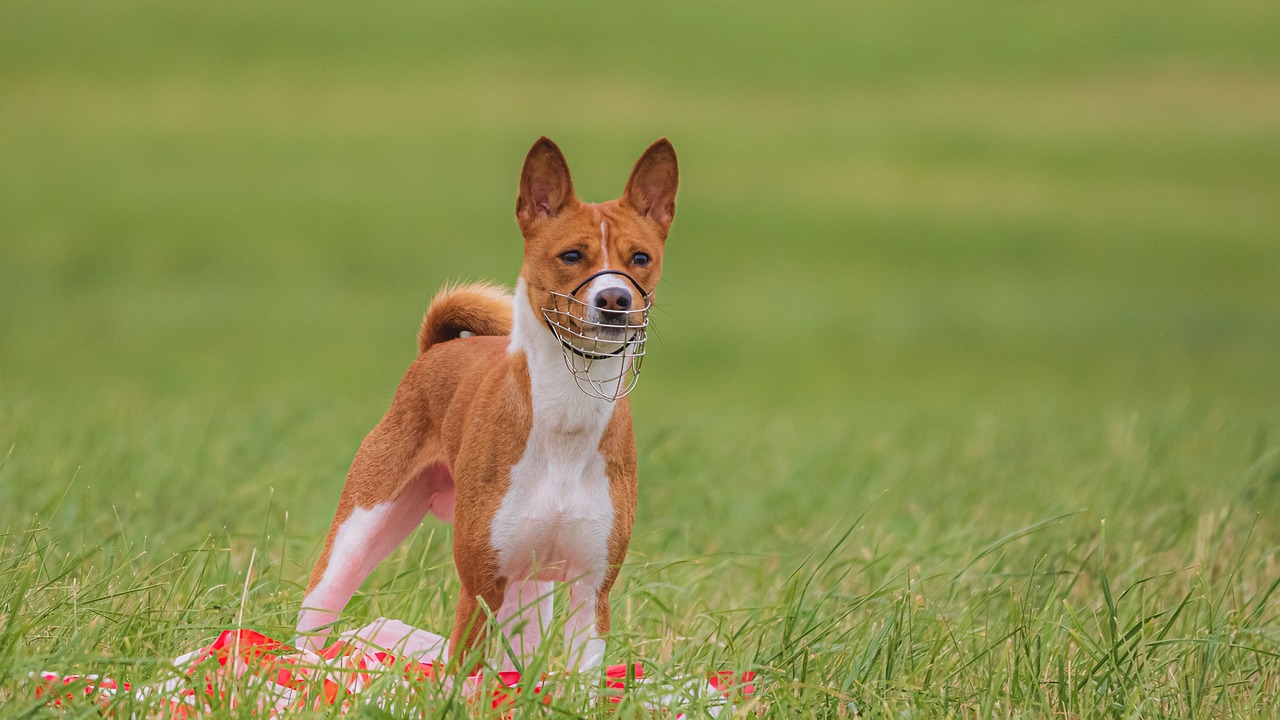
Types of Lures
When it comes to training, understanding the various types of lures can significantly enhance your approach. Lures serve as a bridge between the desired behavior and the learner's understanding. By leveraging different types of lures, trainers can create a more engaging and effective learning environment. The key to successful training lies in selecting the right lure that resonates with the learner, whether it's an animal or a human. In this section, we’ll explore several types of lures, including food, toys, and visual cues, and discuss their unique benefits.
Food lures are perhaps the most recognized and widely used type of lure in training. They tap into the natural instinct to seek out food, making them incredibly powerful motivators. However, not all food lures are created equal. The effectiveness of a food lure depends on the quality and appeal of the treat. High-value treats, like small pieces of chicken or cheese, can ignite excitement and focus during training sessions. Additionally, the timing of the food lure is crucial; presenting it immediately after the desired behavior reinforces that action in the learner's mind.
Another type of lure that proves to be effective is toy and play lures. These lures are particularly beneficial in training scenarios involving dogs and other playful animals. Toys can serve as both a reward and a motivator, making the training process enjoyable. For instance, incorporating a favorite ball or tug toy during training sessions can encourage engagement and enthusiasm. The act of play not only reinforces the desired behavior but also strengthens the bond between the trainer and the learner.
Visual cues are another fascinating category of lures that can be effectively utilized in training. These cues can range from hand signals to colored objects that draw attention. Visual lures can be particularly beneficial for learners who may have hearing impairments or for situations where verbal commands might be ineffective. By using distinct visual signals, trainers can guide learners towards the desired behavior while also enhancing their overall understanding.
In summary, the types of lures you choose can dramatically influence the effectiveness of your training sessions. Each type—food, toys, and visual cues—offers unique advantages that can cater to different learners' preferences and needs. By thoughtfully selecting and incorporating these lures into your training strategy, you can create a more engaging and productive learning experience.
Q: What are the best food lures for training?
A: The best food lures are high-value treats that are appealing to the learner. Options like small pieces of cooked chicken, cheese, or even specially designed training treats work well to keep the learner motivated.
Q: How can I effectively use toys as lures?
A: To effectively use toys as lures, incorporate them into your training sessions by using them as rewards for desired behaviors. Make sure to choose toys that the learner is particularly fond of to enhance their engagement.
Q: What are visual cues, and how do they work?
A: Visual cues are signals that guide learners towards desired behaviors, often using hand gestures or colored objects. They can be particularly useful for learners who may not respond well to verbal commands.
Food Lures
When it comes to training, are like the golden ticket. They are among the most common and effective tools available, not just for animals, but for humans too! Imagine you're trying to teach a dog to sit. What better way to get their attention than with a tasty treat? Food lures work by tapping into the natural instincts of learners, making them eager to perform the desired behavior in exchange for a reward. This concept is rooted in the psychology of motivation, where the promise of a delicious snack can make even the most stubborn learner perk up and pay attention.
Choosing the right food items is crucial. Not all treats are created equal, and some will definitely be more enticing than others. Think about your learner’s preferences. For example, if you're training a dog, you might discover that they go absolutely wild for chicken bits but could care less about plain kibble. The key is to select high-value treats that will not only grab their attention but also keep them engaged throughout the training session. These treats should be small enough to consume quickly, allowing for a smooth flow of training without long interruptions.
But it’s not just about what you use; it's also about how you use it! Timing and delivery of food lures can significantly impact the success of your training. Imagine you’re teaching a puppy to come when called. If you wait too long to reward them after they respond, they may not connect the dots between their action and the treat. Instead, you want to present the lure at the exact moment they perform the desired behavior. This reinforces the connection in their mind, making them more likely to repeat the action in the future.
Incorporating food lures effectively also means being mindful of the environment. If you're in a distracting setting, it might be wise to choose an even more tempting treat to keep their focus. A well-timed food lure can turn training from a chore into a game, making the experience enjoyable for both trainer and learner. Remember, the ultimate goal is to create a positive association with the behavior you’re teaching, and food lures can be a delightful bridge to that outcome.
In summary, food lures are a powerful ally in the training process. By selecting the right treats, delivering them at the right moment, and creating an engaging environment, you can enhance the learning experience significantly. Whether you're training a pet, a child, or even yourself, remember that the right motivation can make all the difference!
- What types of food make the best lures? High-value treats like chicken, cheese, or special training treats are usually the most effective.
- How do I know if my learner is motivated by food lures? Observe their reaction to different foods; if they show excitement or eagerness, you’ve found a winner!
- Can I use food lures for human training? Absolutely! Food can be a great motivator for both children and adults in various learning scenarios.
Choosing the Right Treats
When it comes to training, the importance of choosing the right treats cannot be overstated. Just like a chef selects the finest ingredients to create a delicious dish, trainers must pick treats that are not only appealing but also motivating for the learner. Think of treats as the fuel that powers the training engine—without the right fuel, the engine may sputter or stall. So, how do you ensure you’re selecting the best treats for your training sessions?
First, consider the preferences of your learner. Just as people have different tastes in food, animals do too. Some may be drawn to crunchy textures, while others prefer something soft and chewy. Conduct a little taste test to discover what excites your learner the most. For example, you might find that your dog goes wild for chicken-flavored treats, while your cat might be more interested in fish-based snacks. Pay attention to their reactions; the more enthusiastic they are, the better the treat choice!
Another crucial factor is the size of the treats. When training, you want to keep the sessions fluid and engaging. Large treats can slow down the process, causing interruptions as learners chew away. Instead, opt for small, bite-sized pieces that can be quickly consumed. This way, you can keep the momentum going, reinforcing desired behaviors without unnecessary delays. You can also consider using homemade treats where you have full control over the ingredients and can tailor them to your learner's preferences.
Moreover, it’s essential to think about the health aspect of the treats you choose. Just like we wouldn’t want to eat junk food all the time, our pets shouldn’t be overloaded with unhealthy snacks either. Look for treats that are made from natural ingredients, without artificial additives or excessive fillers. A good rule of thumb is to read the labels and choose options that list real meat or wholesome ingredients at the top. This not only ensures a healthier diet but also enhances the training experience by making your learner feel good overall.
Lastly, consider the variety of treats you use. Just as we enjoy a diverse diet, animals appreciate variety too! Mixing it up can keep your training sessions exciting and unpredictable, which can help maintain your learner's engagement. You might have a rotation of treats that includes a mix of savory, sweet, and crunchy options. By doing this, you’re not only catering to their tastes but also keeping them on their toes, making each training session feel fresh and fun.
In summary, choosing the right treats is a blend of understanding your learner’s preferences, ensuring healthiness, selecting appropriate sizes, and incorporating variety. When you get this right, you’re setting the stage for a successful training experience that is both rewarding and enjoyable!
- What types of treats are best for training? High-value treats that are small, soft, and appealing to your learner tend to work best.
- How many treats should I use during a training session? Use enough to motivate your learner but be mindful of their overall diet. Small amounts are ideal.
- Can I use regular food as training treats? Yes, as long as it’s something your learner enjoys and is suitable for their diet.
Timing and Delivery
When it comes to using food lures effectively, are crucial elements that can make or break your training sessions. Imagine you're trying to teach a dog to sit. You give the command, and as soon as the dog’s rear hits the ground, you present the treat. This immediate reward reinforces the behavior, making it clear that sitting is the desired action. But what if you wait too long to deliver that treat? The dog may lose the connection between the action and the reward, leading to confusion and frustration.
To master the art of timing, you need to develop a keen sense of observation. Pay attention to the moment your learner performs the desired behavior. This is often referred to as the “marking moment.” Use a clicker or a verbal cue like "Yes!" to mark the behavior right when it happens. This technique not only captures the moment but also builds anticipation for the reward that follows. Timing is everything, and getting it right can turn a mediocre training session into a highly effective one.
Delivery is just as important as timing. You want to present the lure in a way that excites and engages your learner. For instance, instead of simply handing over the treat, consider tossing it a short distance away. This adds an element of play and encourages the learner to be active in the training process. When using toys as lures, you might want to engage in a quick game of tug or fetch before presenting the toy as a reward. This keeps the energy high and maintains interest.
Another aspect of effective delivery is ensuring that the lure is easily accessible and appealing. If you're using food, make sure the treats are fresh and aromatic. For toys, choose items that your learner finds irresistible. A high-value treat or a favorite toy can significantly enhance the learning experience. Remember, the goal is to create a positive association with the desired behavior, and the way you time and deliver your lures plays a pivotal role in that process.
In summary, mastering the timing and delivery of lures is essential for effective training. By marking behaviors accurately and delivering rewards in an engaging manner, you can enhance learning outcomes and foster a stronger bond with your learner. So, the next time you prepare for a training session, think about how you can refine your timing and delivery techniques to create a more impactful experience.
- What is the best way to time my rewards during training?
The best way to time your rewards is to mark the desired behavior immediately as it happens, using a clicker or a verbal cue, followed by delivering the reward promptly.
- How can I make my delivery more engaging?
You can make your delivery more engaging by tossing the treat or toy a short distance away, or incorporating a playful interaction before presenting the reward.
- What types of treats work best as lures?
High-value treats, such as small pieces of cooked chicken or cheese, tend to work best as they are more motivating for the learner compared to regular kibble.
- How can I assess if my timing is effective?
You can assess your timing by observing your learner's response. If they consistently repeat the desired behavior, your timing is likely effective. If not, consider adjusting your approach.
Toy and Play Lures
When it comes to training, toys and play are not just fun distractions; they can be incredibly effective lures that enhance the learning experience for animals, especially dogs. Imagine trying to teach a puppy to sit or stay, and instead of just using treats, you pull out their favorite squeaky toy. Suddenly, their focus shifts, and they’re eager to engage! This is the magic of toy and play lures. They tap into the natural instincts of animals, making training feel less like a chore and more like a game. But how do you effectively incorporate play into your training sessions? Let's dive in!
First, it's essential to choose the right type of toy. Not all toys will have the same effect on your furry friend. For instance, some dogs may be motivated by a tug toy, while others might prefer a ball or a frisbee. Understanding your pet's preferences is key. Once you've identified what excites them, you can use these toys to lure them into performing the desired behaviors. For example, if your dog loves to fetch, you can use the ball as a lure to encourage them to come back to you after a command. This not only reinforces their training but also strengthens the bond between you and your pet.
Another important aspect is timing. Just like with food lures, the timing of when you present the toy is crucial. If your dog performs the desired behavior, immediately reward them with a play session. This creates a direct connection in their mind between the action and the reward. You might say, “Good boy!” while tossing the toy, which reinforces positive behavior. Remember, the goal is to create a fun and engaging atmosphere where learning occurs naturally. Play should be a reward for good behavior, not a distraction that pulls them away from learning.
In addition to using toys, incorporating play into your training can also help with energy management. High-energy pets often struggle to focus during training sessions. By allowing them to play between commands, you can help them expend some of that excess energy, making them more receptive when it’s time to learn. For example, during a training session, you could alternate between practicing commands and engaging in short bursts of play. This keeps the session dynamic and enjoyable, preventing boredom that can lead to disengagement.
Lastly, it’s worth noting that play lures can also be beneficial for socialization. Engaging with toys in a group setting can help your pet learn how to interact with other animals and people. This is particularly important for puppies, as socialization plays a crucial role in their development. By incorporating play into your training, you’re not only teaching commands but also fostering a well-rounded, confident pet.
In summary, toys and play lures can significantly enhance training sessions. By choosing the right toys, timing your rewards effectively, managing energy levels, and promoting socialization, you can create a rich learning experience that is both fun and effective. So, grab that squeaky toy, and let the training games begin!
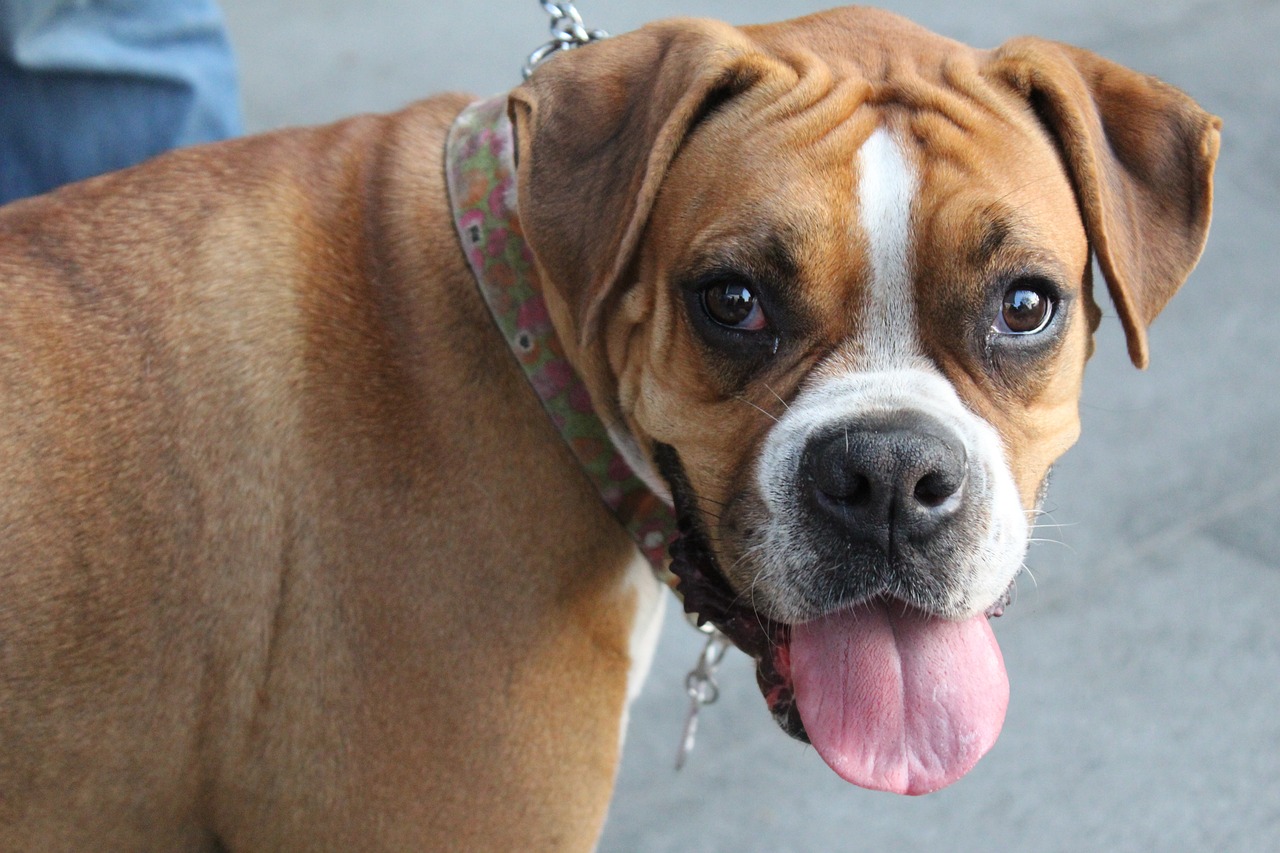
Common Mistakes to Avoid
When it comes to using lures effectively in training, even seasoned trainers can stumble upon some common pitfalls. These mistakes can significantly impact the learning process, leading to frustration for both the trainer and the learner. One major issue is the over-reliance on lures. While lures can be incredibly effective in guiding behavior, relying on them too heavily can prevent the learner from developing independence. Imagine teaching a child to ride a bike while holding onto the handlebars the entire time; they might never learn to balance on their own. Similarly, it’s crucial to gradually fade out lures as the learner becomes more competent.
Another common mistake is the inconsistent use of lures. Inconsistency can be confusing for learners, much like trying to follow a recipe that keeps changing its ingredients. For example, if you reward a dog with a treat one day for sitting but not the next, the dog may become unsure of what behavior is expected. To avoid this, maintain a consistent approach in your training sessions. This not only reinforces learning but also builds trust between you and the learner. A table summarizing these common mistakes can help clarify their impact:
| Mistake | Impact | Solution |
|---|---|---|
| Over-reliance on lures | Prevents independence | Gradually fade lures |
| Inconsistent use of lures | Confuses learners | Maintain a consistent approach |
Furthermore, trainers often forget to evaluate the effectiveness of their lures. Just because a lure worked once doesn’t mean it will always be effective. Regular assessment allows you to adapt your techniques based on the learner's progress. This is akin to a coach reviewing game footage to identify areas for improvement. By observing how the learner responds, you can tweak your approach, ensuring that the lures remain engaging and motivating.
Lastly, neglecting to provide feedback can be detrimental. Feedback is the backbone of effective training; it lets learners know where they stand and what adjustments they need to make. Without it, they may feel lost, much like a traveler without a map. Therefore, always ensure that you are offering constructive feedback, reinforcing positive behaviors, and guiding learners toward improvement.
- What should I do if my lure isn't working? Try changing the type of lure or adjusting the timing of your rewards.
- How can I tell if my learner is ready to fade lures? Look for consistent behavior without the lure; if they respond reliably, it’s time to reduce reliance.
- Can I use multiple lures in one training session? Yes, but ensure that they are appropriate for the behavior being taught and maintain consistency.
Over-Reliance on Lures
In the world of training, whether it’s for pets or humans, lures can be incredibly effective tools. However, it's essential to recognize that an can lead to significant issues in the learning process. Think of it like a crutch; while it can help you walk, if you lean on it too much, you might forget how to stand on your own. This analogy perfectly captures the balance trainers must maintain when using lures.
When learners become too accustomed to receiving lures, they might start to expect rewards for every action. This expectation can hinder their ability to perform tasks independently, creating a dependency that can be hard to break. Imagine a dog that only sits when a treat is visible. If the treat disappears, so does the behavior. To avoid this pitfall, trainers should aim to gradually fade the use of lures. This means slowly reducing the frequency of the lures while reinforcing the desired behaviors through other means, such as praise or play.
Another common issue with relying too heavily on lures is the potential for confusion. If a learner is rewarded inconsistently, they may not understand what behavior is being reinforced. For example, if a dog receives a treat for sitting one day but not the next, it creates uncertainty. This inconsistency can lead to frustration for both the trainer and the learner. Therefore, establishing a clear system for when and how lures are used is crucial for effective training.
To mitigate the risks of over-reliance on lures, trainers can implement several strategies:
- Gradual Fading: Slowly reduce the use of lures as the learner becomes more proficient in the desired behavior.
- Variable Reinforcement: Incorporate a mix of rewards, including verbal praise and physical affection, to encourage independence.
- Focus on Engagement: Create a training environment that emphasizes engagement and interaction beyond just lures.
Ultimately, the goal of training should be to foster independence and confidence in the learner. By being mindful of the potential pitfalls associated with over-reliance on lures, trainers can create a more balanced and effective learning experience. Remember, the aim is not just to teach a behavior but to empower the learner to perform it without needing a lure every time. This approach not only enhances the learning process but also strengthens the bond between the trainer and the learner, leading to more meaningful interactions.
Q: How can I tell if I'm relying too much on lures during training?
A: If your learner only performs a behavior when a lure is present or seems confused when a lure is absent, it may be time to reassess your approach. Gradually fading the lure and introducing other forms of reinforcement can help.
Q: What are some alternatives to lures in training?
A: Alternatives include verbal praise, physical affection, and playtime. These methods can reinforce desired behaviors without creating dependency on lures.
Q: How can I effectively fade lures?
A: Start by using the lure less frequently, rewarding only the best attempts. Gradually transition to a system where the behavior is reinforced with praise or play more often than with a lure.
Inconsistent Use of Lures
When it comes to training, consistency is key. Imagine trying to learn a new skill, like riding a bike, but your instructor keeps changing the rules. One day, you're told to pedal fast, and the next, you're encouraged to go slow. Confusing, right? The same principle applies to using lures in training. Inconsistent use of lures can lead to confusion and frustration for the learner, whether it's a dog, a horse, or even a human. When you vary how and when you use lures, you risk undermining the very behaviors you are trying to reinforce.
For instance, if you're training your dog to sit using a treat as a lure, but sometimes you reward them with praise instead, your dog might not understand what you expect. They could start to think that sitting is optional or that they only need to perform the action when a treat is present. This inconsistency can create uncertainty and hinder progress. Therefore, establishing a consistent approach to luring is essential for building trust and reinforcing learning.
To avoid this pitfall, consider the following strategies:
- Establish Clear Rules: Make sure you have set rules for how lures will be used throughout the training process. This includes deciding when and how often to use them.
- Stick to One Type of Lure: If you start with food lures, try to stick with them until the behavior is learned before introducing other types of lures, like toys or praise.
- Communicate Clearly: Use consistent cues and signals when presenting lures, so the learner knows exactly what is expected of them.
Remember, training is a journey, and just like any journey, it requires a clear path. By maintaining consistency in your lure techniques, you can ensure that the learner remains focused and engaged, ultimately leading to greater success in mastering new skills.
Q: What are lures, and how do they work in training?
A: Lures are motivating stimuli used to guide a learner towards a desired behavior. They can be food, toys, or visual cues that encourage the learner to perform the action you want to reinforce.
Q: How can I ensure I'm using lures consistently?
A: To ensure consistency, establish clear rules for using lures, stick to one type until the behavior is learned, and communicate your expectations clearly with the learner.
Q: What should I do if my learner seems confused by the lures?
A: If confusion arises, it may be helpful to revert to a more straightforward approach. Use the same lure consistently, and ensure that your cues are clear and understandable.
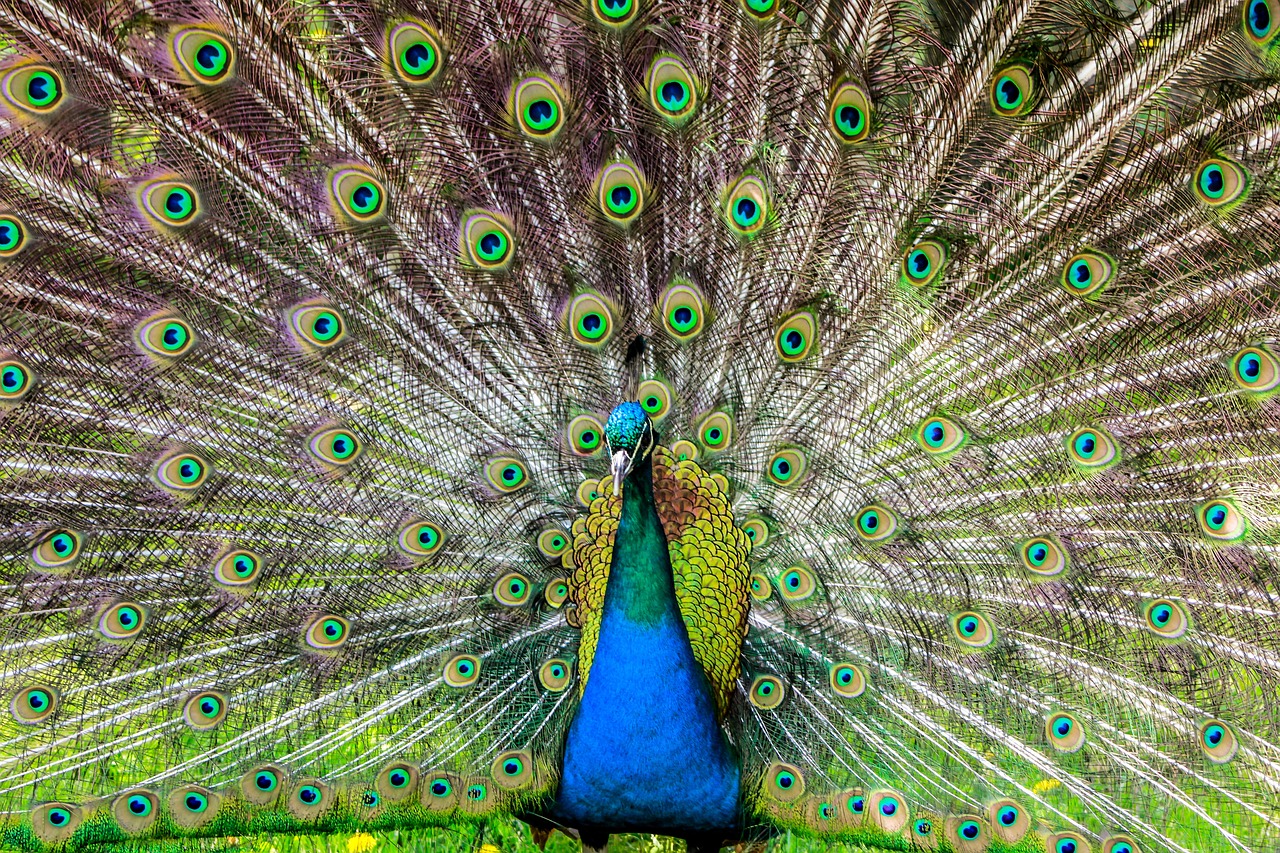
Evaluating Training Progress
Evaluating training progress is a vital component of any effective training program. It allows trainers to gauge how well the lures are working and whether the learner is absorbing the desired behaviors. Without proper evaluation, you might be left in the dark, unsure of what methods are effective and which ones need tweaking. Think of it as a GPS for your training journey; it helps you navigate the path to success while avoiding unnecessary detours.
One of the first steps in evaluating training progress is to set measurable goals. These goals act as benchmarks that help you assess the impact of your luring techniques. For example, if you're training a dog to sit on command, a measurable goal could be the number of successful sits achieved within a specific timeframe. By keeping track of these metrics, you can easily identify trends and areas that need improvement.
Another crucial aspect is the feedback mechanism. Gathering feedback from the training sessions can provide invaluable insights into how well the learner is responding to the lures. This feedback can come in various forms, such as observational notes, video recordings, or even direct input from the learner (in the case of animals, this could be their body language or enthusiasm). By analyzing this feedback, trainers can make informed adjustments to their methods, ensuring that the lures remain effective and engaging.
To facilitate this process, consider using a simple evaluation table to track progress over time. Here's an example of what that might look like:
| Date | Behavior Targeted | Success Rate (%) | Notes/Adjustments |
|---|---|---|---|
| 01/01/2023 | Sit | 80% | Increase lure visibility |
| 01/08/2023 | Sit | 90% | Introduce verbal cue |
| 01/15/2023 | Sit | 95% | Gradually fade lure |
This table not only helps in keeping a record of the training sessions but also serves as a visual representation of progress over time. By regularly updating it, trainers can quickly identify patterns, such as improvements or plateaus in the learner's performance. This proactive approach to evaluation can make all the difference in achieving training goals.
Moreover, it’s essential to remain flexible and ready to adapt your strategies based on the evaluation results. If you notice that a particular lure isn’t producing the desired response, don’t hesitate to switch things up. Experiment with different lures, adjust your timing, or even change your training environment. The key is to stay engaged and responsive to the learner's needs. After all, training is not a one-size-fits-all endeavor; it requires a tailored approach that evolves with the learner's progress.
In conclusion, evaluating training progress is not just about checking off boxes; it's about creating a dynamic and responsive training experience. By setting measurable goals, gathering feedback, and making necessary adjustments, trainers can enhance the effectiveness of their luring techniques and ultimately lead their learners to success. So, are you ready to take your training sessions to the next level? Let the evaluation process guide you!
- What are the best ways to track training progress? Keeping a log or using evaluation tables can be effective. Regularly documenting successes and challenges helps in making informed adjustments.
- How often should I evaluate training progress? It’s advisable to evaluate progress after every training session or at least weekly to ensure that you’re on the right track.
- Can I use technology to help evaluate training? Absolutely! Video recordings and training apps can provide additional insights and help you analyze performance more objectively.
Setting Measurable Goals
When it comes to training, whether for animals or humans, is crucial. Think of it as having a roadmap for your journey; without it, you might just wander aimlessly. Measurable goals help you track progress, identify areas for improvement, and celebrate successes along the way. So, how do you go about establishing these goals effectively?
First off, it’s essential to define what you want to achieve. Are you aiming for a specific behavior, like teaching a dog to sit on command, or are you looking for a broader skill set? Whatever it is, ensure that your goals are specific, measurable, achievable, relevant, and time-bound—commonly known as the SMART criteria. For example, instead of saying, “I want my dog to behave better,” you could set a goal like, “I want my dog to sit on command 90% of the time within the next month.” This way, you have a clear target to aim for.
Next, it’s vital to break down larger goals into smaller, manageable milestones. This approach allows you to celebrate small victories, which can be incredibly motivating. For instance, if your ultimate goal is for your dog to perform a series of tricks, you might set interim goals like:
- Week 1: Teach the dog to sit.
- Week 2: Teach the dog to stay.
- Week 3: Teach the dog to roll over.
By breaking it down, you can easily measure progress at each stage, adjusting your training methods as needed. This makes the process less overwhelming and keeps both you and your learner engaged.
Another essential aspect is to keep a record of your training sessions. Documenting what works and what doesn’t can provide valuable insights. You might consider creating a simple table to track performance over time. Here’s a basic example:
| Week | Command | Success Rate (%) | Notes |
|---|---|---|---|
| 1 | Sit | 80 | Needs more reinforcement |
| 2 | Stay | 70 | Inconsistent with distractions |
| 3 | Roll Over | 60 | Progressing slowly |
This table not only helps you visualize progress but also serves as a motivational tool. Seeing improvements, no matter how small, can boost your confidence and commitment to the training process.
Lastly, remember to be flexible. Sometimes, you might find that a goal is too ambitious or not ambitious enough. Be open to adjusting your targets based on the learner’s progress. If your dog is mastering commands faster than expected, you might want to raise the bar and introduce more complex tasks sooner. On the flip side, if progress is slower, don’t hesitate to give yourself and your learner more time to achieve those goals.
In conclusion, setting measurable goals is about creating a clear path for training success. By defining specific targets, breaking them down into manageable steps, keeping records, and being adaptable, you can enhance the learning experience significantly. Remember, the journey of training is just as important as the destination, so enjoy every step of the way!
- What are measurable goals in training? Measurable goals are specific, quantifiable objectives that help track progress and outcomes in training.
- How do I know if my goals are achievable? Ensure your goals are realistic based on the learner's current abilities and the time frame you have.
- Why is it important to document training progress? Documenting progress helps identify what works, what doesn’t, and allows for adjustments to improve training outcomes.
- Can I adjust my goals during the training process? Absolutely! Flexibility is key in training; adjust goals as needed based on progress.
Feedback and Adjustments
When it comes to training, whether you're working with animals or humans, feedback is the backbone of improvement. Just like a compass guides a traveler, feedback helps trainers navigate the complex journey of learning. It's essential to understand that training is not a one-size-fits-all process; it requires a keen eye and an open mind to adapt and adjust as needed.
Gathering feedback can take many forms. For instance, you might observe the learner's reactions during training sessions, noting how they respond to various lures. Are they eagerly engaging with the food lures, or do they seem disinterested? This observation is crucial because it informs your next steps. If a particular treat isn't capturing their attention, it might be time to switch it up. Similarly, if a toy lure isn’t eliciting the desired excitement, consider introducing a new, more stimulating option.
Moreover, don't hesitate to ask for direct feedback. If you're training a human, a simple conversation can unveil insights that you might miss through observation alone. Questions like, "How did that exercise feel for you?" or "What did you find most engaging?" can open the door to valuable information. For animal training, you can assess their body language and energy levels to gauge their engagement. A wagging tail or perked ears can indicate enthusiasm, while a lack of interest might signal a need for change.
Once you've gathered feedback, the next step is making adjustments. This is where the magic happens! Adjustments can be small tweaks or significant changes, depending on the feedback received. For example, if you find that a certain type of food lure isn't effective, you might consider:
- Switching to a different flavor or texture
- Changing the timing of when you present the lure
- Incorporating a new type of lure altogether, like a toy or visual cue
It’s also important to document these adjustments. Keeping a training log can help you track what works and what doesn't over time. This way, you can look back and analyze patterns, making it easier to refine your approach as you go along. A simple table might help visualize the changes and outcomes:
| Date | Type of Lure Used | Feedback Received | Adjustments Made |
|---|---|---|---|
| 2023-10-01 | Chicken Treats | Very engaged | Continue using |
| 2023-10-05 | Peanut Butter Toy | Lost interest quickly | Switch to squeaky toy |
In summary, feedback and adjustments are not just about correcting mistakes; they are about enhancing the learning experience. By actively seeking feedback and being willing to make adjustments, trainers can create an environment that fosters growth and success. Remember, the goal is to build a strong foundation of trust and understanding, allowing both the trainer and the learner to thrive together.
- What is the best way to provide feedback during training? - Providing feedback should be immediate and specific. Use clear language and focus on behaviors rather than personal attributes.
- How often should I adjust my training techniques? - Adjust your techniques based on the learner's progress and engagement. Regular assessments can help determine when changes are needed.
- Can I use feedback from other trainers? - Absolutely! Other trainers can offer valuable perspectives and suggestions that may enhance your training methods.
Frequently Asked Questions
- What is luring in training?
Luring is a technique used to guide a subject towards a desired behavior by using a motivating stimulus. It’s like using a carrot to lead a donkey—it helps the learner understand what’s expected by making the process more engaging and enjoyable.
- What types of lures can I use?
You can use various types of lures depending on your training context. Common options include food, toys, and visual cues. Each type has its unique benefits, so it’s essential to choose the one that best fits your training goals and the learner's preferences.
- How do I choose the right food lures?
Not all treats are created equal! High-value treats that your learner loves will make them more motivated and engaged during training sessions. Think of it as picking the best ice cream flavor—everyone has their favorites, and the more appealing the treat, the better the response!
- What is the importance of timing in lure delivery?
Timing is everything! Delivering the lure at the right moment can significantly impact the success of your training. It’s like catching a wave at just the right time; if you miss it, the moment is gone. Proper timing reinforces the desired behavior and helps solidify the learning process.
- Can I rely too much on lures?
Absolutely! While lures are fantastic tools, over-reliance can hinder the learner's independence. It’s important to gradually fade the lures as training progresses, encouraging the learner to perform the behavior without needing constant motivation.
- How can I evaluate the effectiveness of my lures?
Monitoring progress is key! Setting measurable goals allows you to assess how well the lures are working. Regular feedback and adjustments based on the learner's response will help you fine-tune your approach for even better results.




